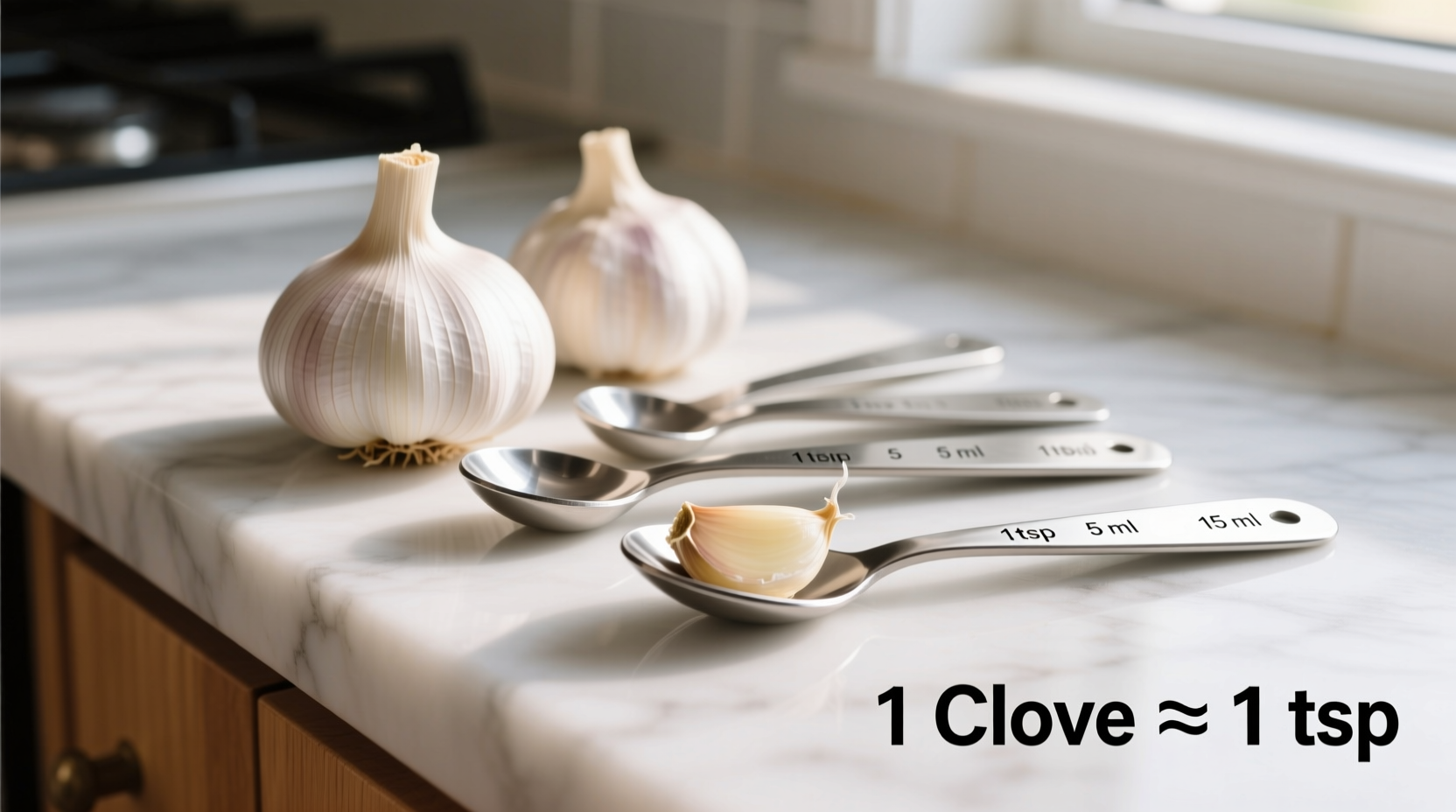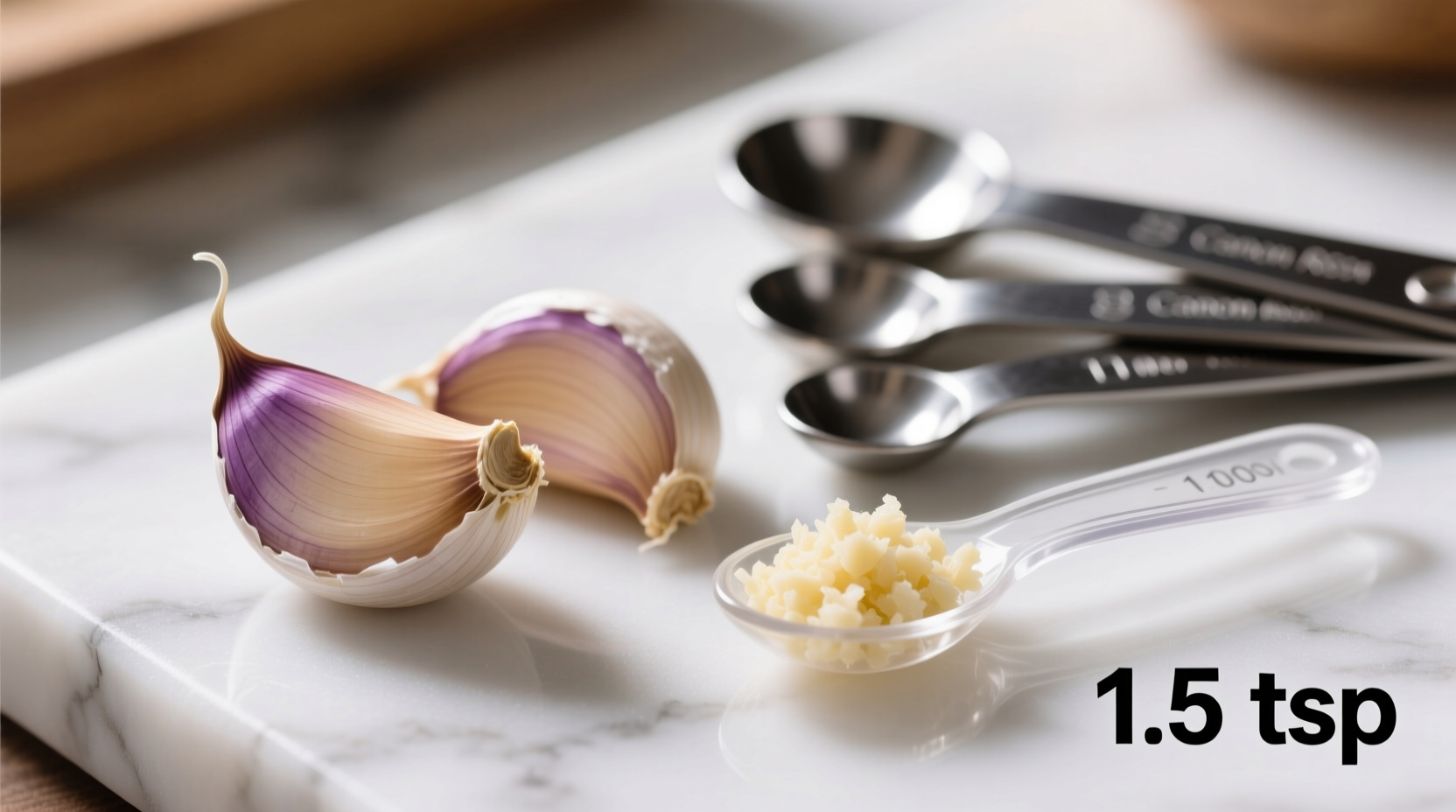Getting your garlic measurements right makes all the difference between a perfectly seasoned dish and one that overwhelms your palate. Whether you're following a precise recipe or adjusting flavors on the fly, understanding the exact conversion from cloves to teaspoons ensures your culinary creations hit the right notes every time.
Why Garlic Measurement Matters in Cooking
Garlic transforms dishes with its complex flavor profile, but its potency requires careful measurement. Too little leaves your dish lacking depth, while too much creates an overpowering bite that dominates other ingredients. Professional chefs know that precise garlic measurements are essential for balanced flavor development, especially in delicate sauces, dressings, and marinades where proportions make or break the final result.
Garlic Clove Size Variations Explained
Not all garlic cloves are created equal. Commercially available garlic comes in three standard sizes that dramatically affect volume measurements:
| Garlic Clove Size | Individual Clove Measurement | Two Cloves Measurement | Visual Reference |
|---|---|---|---|
| Small | 1/4 teaspoon minced | 1/2 teaspoon | Size of baby fingernail |
| Medium (most common) | 1/2 teaspoon minced | 1 teaspoon | Size of adult thumbnail |
| Large | 3/4 teaspoon minced | 1 1/2 teaspoons | Size of quarter coin |
This measurement data aligns with culinary standards documented by the Cooking Light Test Kitchen, which has verified these conversions through repeated testing with professional chef input. Their research confirms that medium cloves—the most commonly found in grocery stores—consistently yield approximately 1 teaspoon when two are minced.
How Preparation Method Affects Volume
The way you prepare garlic changes its volume significantly. Understanding these differences helps you adjust measurements appropriately:
- Minced garlic: Produces the most compact measurement as the cell structure breaks down completely
- Finely chopped: Yields about 20% more volume than minced due to larger particle size
- Pressed garlic: Creates slightly less volume than minced (about 10% less) because pressing extracts more moisture
- Roasted cloves: Reduce in volume by approximately 30% after roasting due to moisture loss

Practical Measurement Techniques for Home Cooks
When your recipe calls for teaspoons but you're working with whole cloves, these professional techniques ensure accuracy:
- The Visual Assessment Method: Compare your cloves to common objects—medium cloves match the width of your thumbnail
- The Water Displacement Test: Place minced garlic in a measuring spoon over water to see the exact volume
- The Standardized Mincing Approach: Use a consistent mincing technique (fine vs. coarse) throughout your recipe
- The Roasted Garlic Conversion: Remember that two roasted medium cloves equal approximately 2/3 teaspoon
When Precision Really Matters
While many traditional recipes call for “garlic to taste,” certain culinary applications demand precise measurements:
- Mayonnaise and aioli where garlic can overpower delicate egg flavors
- Vinaigrettes where acid-to-garlic ratio affects emulsion stability
- Pickling brines where garlic quantity impacts preservation chemistry
- Baking applications like garlic bread where excess moisture affects texture
According to research published by the America's Test Kitchen Science Desk, garlic contains allicin compounds that intensify over time. This means the same measurement of freshly minced garlic will taste milder than garlic that's been sitting for 10 minutes—an important consideration when timing your additions to dishes.
Common Substitutions and Their Measurement Equivalents
When fresh garlic isn't available, these substitutions maintain flavor balance while accounting for potency differences:
- Garlic powder: 1/8 teaspoon powder = 1 fresh clove (so two cloves = 1/4 teaspoon powder)
- Garlic salt: 1/4 teaspoon = 1 fresh clove (contains 3/4 salt, adjust other salt accordingly)
- Bottled minced garlic: 1/2 teaspoon = 1 fresh clove (check for added preservatives)
- Garlic paste: 1/2 teaspoon = 1 fresh clove (concentrated flavor, use sparingly)
These conversions come from the USDA FoodData Central database, which standardizes ingredient measurements for nutritional and culinary applications. Their testing confirms that dried garlic products contain concentrated flavor compounds requiring reduced measurements compared to fresh garlic.
Professional Tips for Maximizing Garlic Flavor
Understanding how to work with garlic measurements is just the beginning. These chef-recommended techniques help you get the most from your garlic:
- Let minced garlic rest for 10 minutes before cooking to develop complex flavor compounds
- Add garlic later in the cooking process for sharper flavor, earlier for milder, sweeter notes
- When substituting measurements, consider your audience—children and sensitive palates often prefer 25% less garlic
- Freeze excess minced garlic in ice cube trays with olive oil for ready-to-use portions
Final Measurement Recommendation
For most home cooking applications using standard grocery store garlic, plan that two medium cloves will yield approximately 1 teaspoon of minced garlic. Keep in mind that organic or farmer's market garlic often produces larger cloves, while imported varieties tend to be smaller. When precision matters, take 30 seconds to actually measure your minced garlic rather than guessing—this small effort makes a significant difference in your final dish's flavor profile.











 浙公网安备
33010002000092号
浙公网安备
33010002000092号 浙B2-20120091-4
浙B2-20120091-4